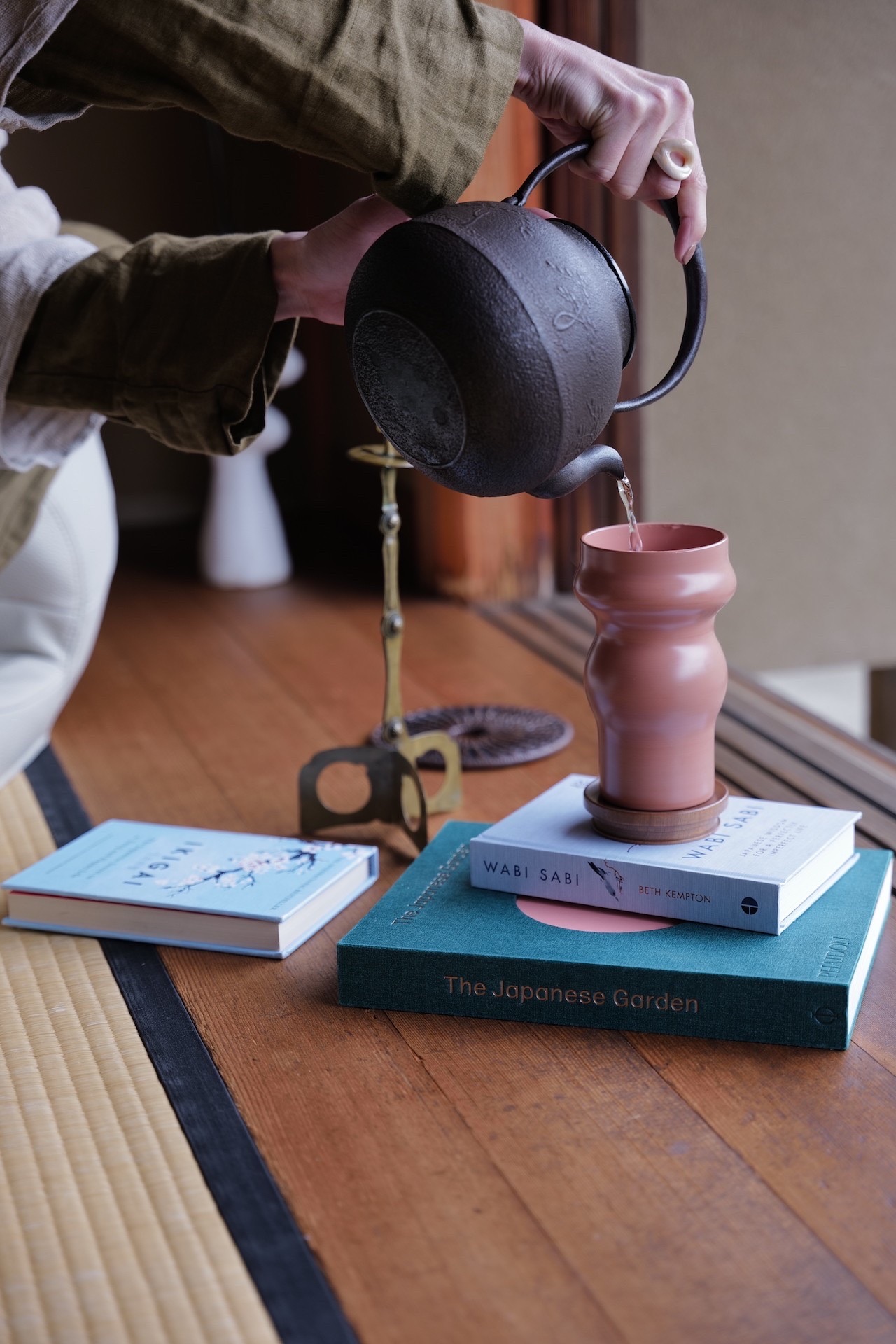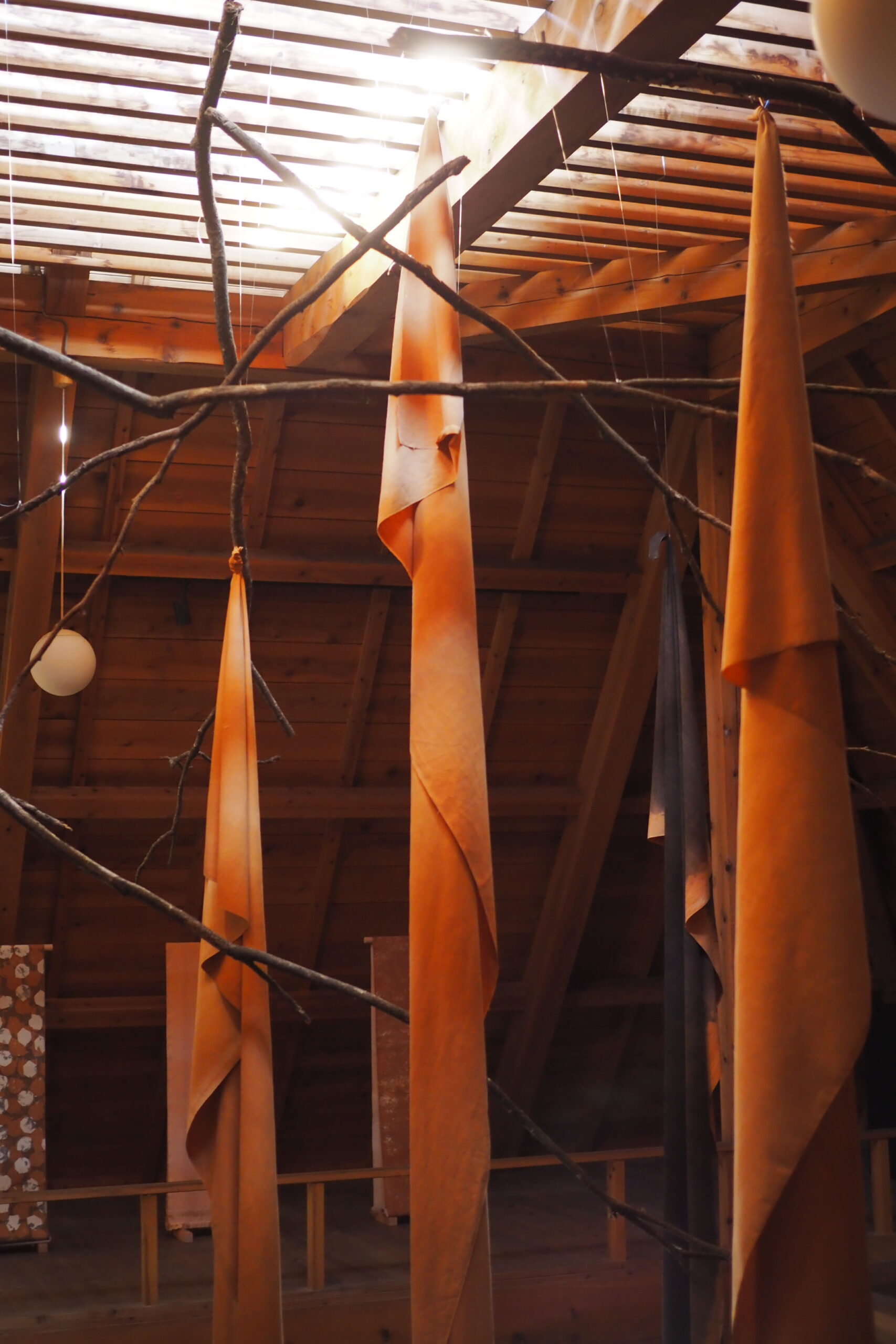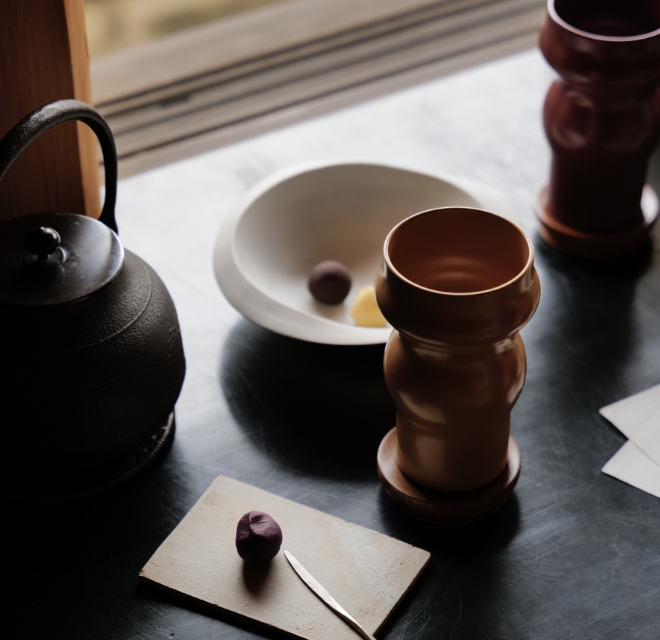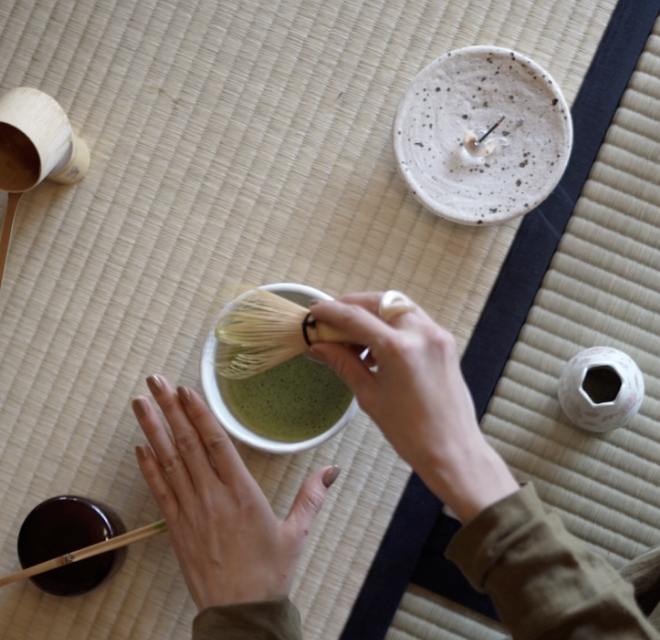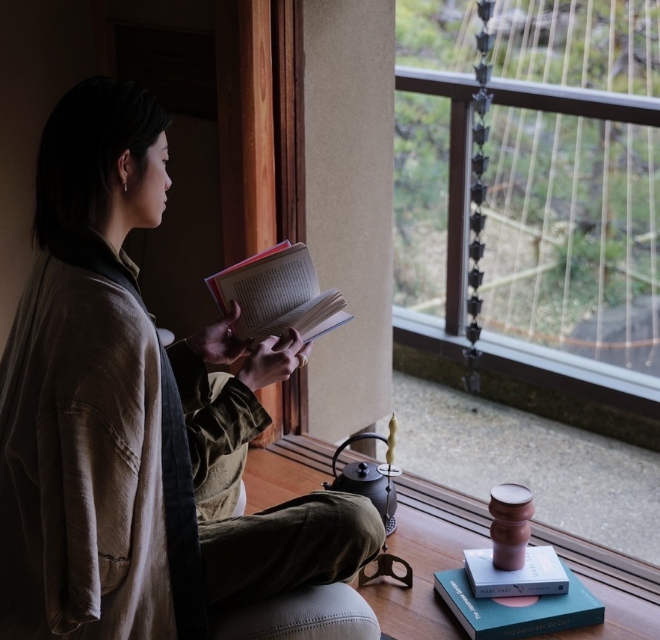Refining your sense of beauty with the Bonsai Master - Kunio Kobayashi -
Kunio Kobayashi is one of Japan's distinguished bonsai masters. Despite starting his unconventional self-taught journey at the age of 28, relatively late compared to his peers, his inherent determination and unparalleled sensibilities have earned him the prestigious Prime Minister Award four times at the Nihon Bonsai Sakufuten and the Commissioner’s Award from the Agency for Cultural Affairs. Kobayashi is also the Director of Shunkaen Bonsai Museum which he founded in 2002 to share the wonders of bonsai. We spoke with him about the allure of bonsai and the legacy he hopes to leave for future generations.

Can you brief us on the history of bonsai?
Although bonsai is recognized worldwide as a hallmark of Japanese culture today, its origins date back approximately 1,300 years to the Tang Dynasty in China. It was first introduced to Japan around 800 years ago during the Heian period as "bonkei" and was refined by the Japanese aesthetic of subtractive beauty. The term "bonsai" was established during the Meiji period. The practice of planting trees in special containers and finding balance and harmony is a testament to the aesthetics and sensibilities unique to Japanese people.
Bonsai has long been appreciated for its elegance, bringing richness and tranquility to everyday life. In recent years, its high artistic value has gained popularity in Europe, to the point where the word "bonsai" is recognized globally as a symbol of Japanese culture. I have trained around 150 apprentices, of which 80-90% are from abroad, including a young man currently studying from Poland. It generally takes about five years to become a qualified bonsai artist.
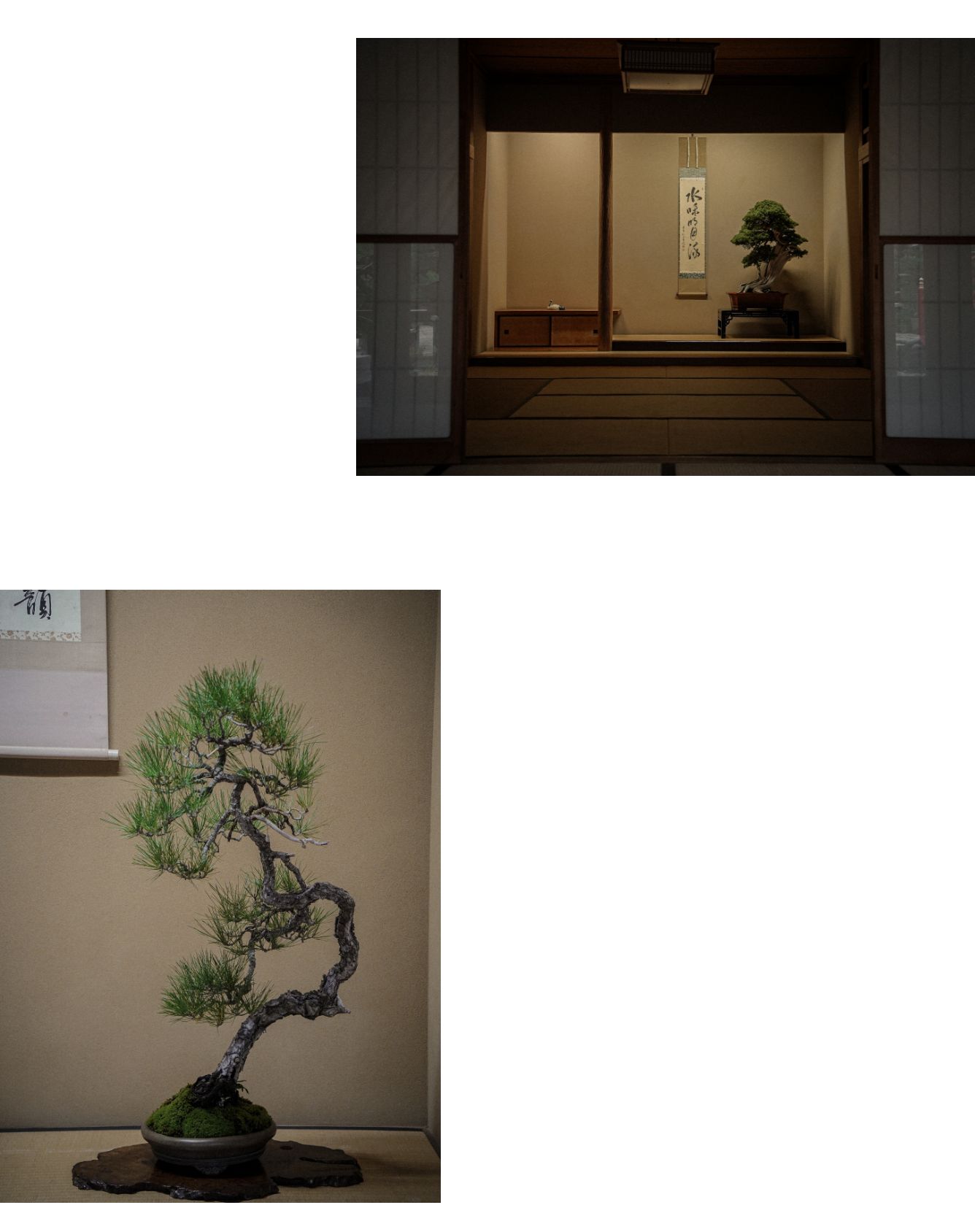
What inspired you to pursue a career in bonsai?
My father was a horticulturist, and I intended to follow in his footsteps. I studied at a high school with a horticulture program and worked at a nursery while I dabbled with bonsai in my spare time. One day, I visited a bonsai exhibition and was struck by a piece titled "Oku no Kyomatsu." Although I was familiar with the beauty of plants and nature growing up in a nursery, this was different. I was fascinated by the powerful trunk, the delicate branches and leaves, and the overall dignity conveyed by the bonsai. It was a profound experience that resonated deeply within me, determining my path.
But at the time, I was 28, married, and had two children. Impractical to go through the typical apprenticeship to live with and learn from the master, I had no choice but to train myself. I visited many bonsai exhibitions and gardens, asked countless questions, and learned techniques through observation and inquiry. Starting late in the field only fueled my inherent drive and passion.
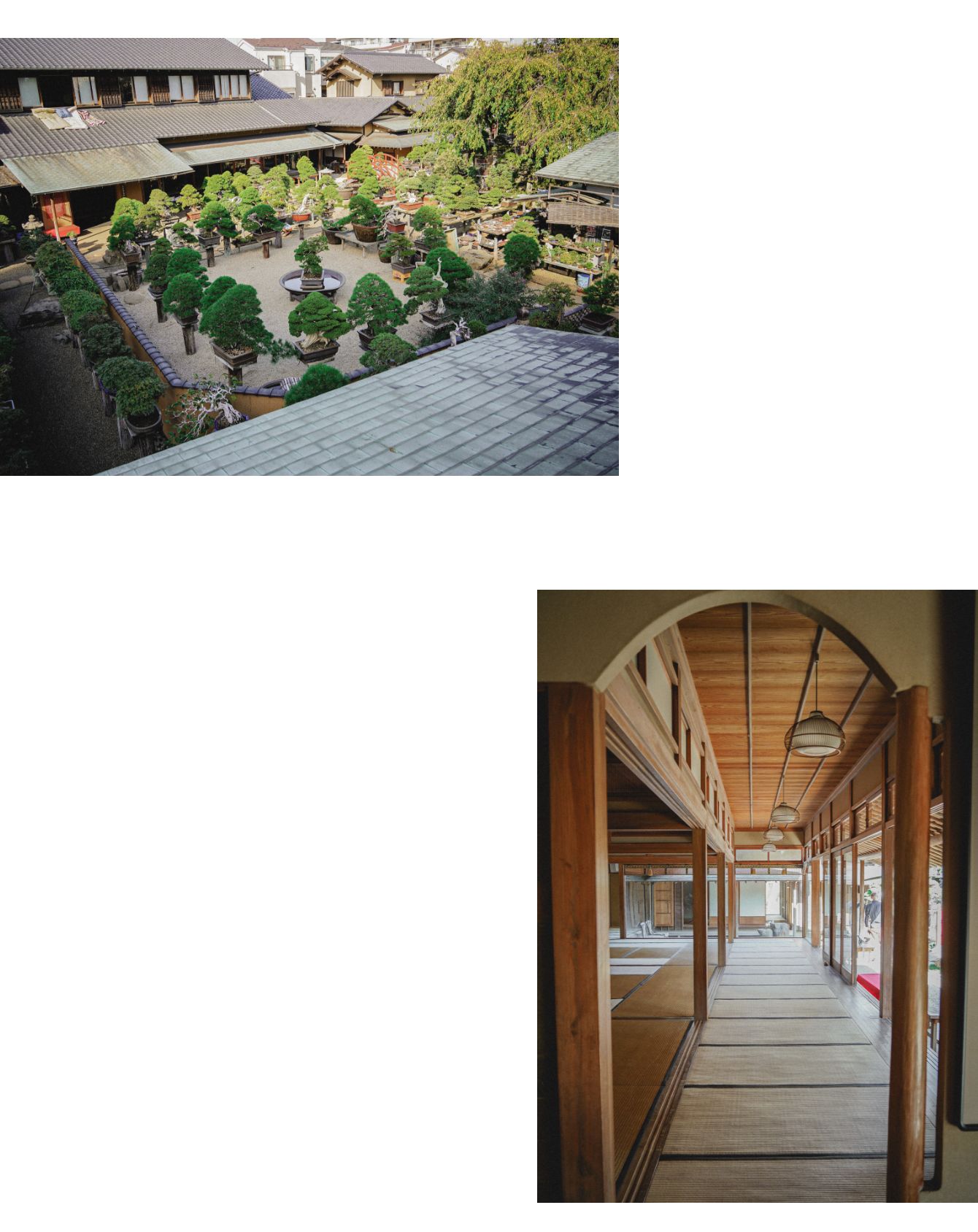
From a self-taught student, you became one of Japan's leading bonsai masters and self-funded the Shunkaen Bonsai Museum. You live and breathe with bonsai. What makes bonsai so captivating?
The beauty of bonsai is that there are many ways to enjoy it. There's the joy of watching the trees grow, the satisfaction of nurturing, and the appreciation of beauty. For me, bonsai is life itself. I will not forget the “dignity of life” I experienced that day that changed my life. While flowers may wither in a few days, with proper care bonsai can live for hundreds of years. Even if a part of a bonsai tree dies, if another part of the trunk continues to draw water, the piece can celebrate its vibrant foliage, creating a dramatic intertwine of life and death. The Japanese phrase "hisureba" implies the complex art of bonsai to evoke the unseen. I want to express the tree’s inner beauty, and it is an art I aspire to pursue with my life.
At 75, I still work 15 hours a day, but I’ve never found it burdensome. Rather it’s an incredible joy. Bonsai is my calling, my hobby, and my ikigai. People have called me "the man chosen by the bonsai gods.” If that's true, I am truly grateful.
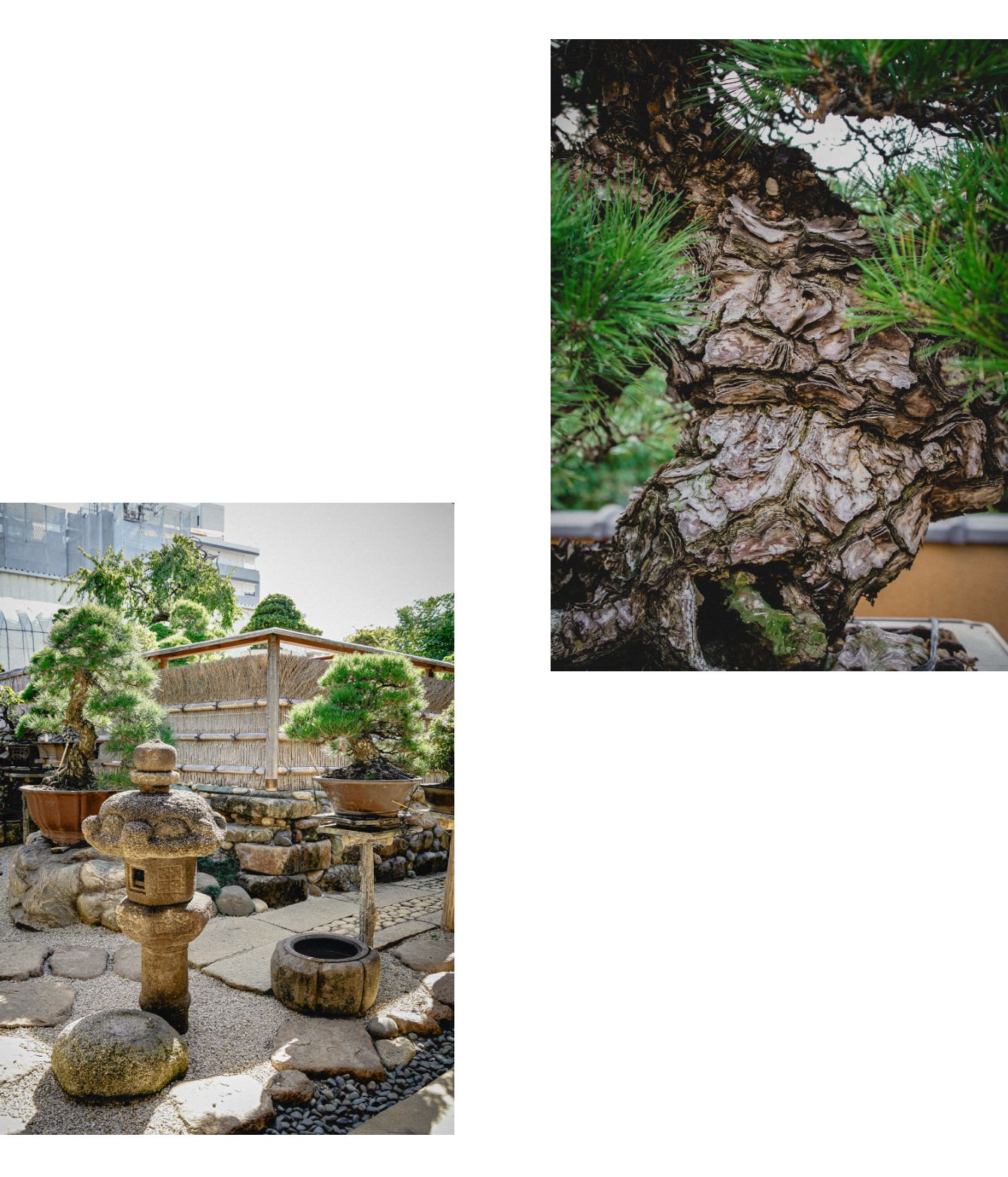
What is important in caring for bonsai?
Simply put, the essence of bonsai is to miniature the trees found in nature and showcase its grand presence. Bonsai artists often refer to it as "keishou soudai.” So a tree that may only be 60cm tall can be cultivated to feel like a towering 30m tree.
Line and space are crucial design elements to express “keishou soudai.” It is critical to observe the natural lines and the movement of the tree. Once you understand the tree’s character, you think about how you would create the space to make the tree look grand. Without yohaku (empty space), the tree loses its grandeur.
Personally, I value individuality, harmony, dignity, and finally "authenticity."
A maple should look like a maple, just as a black pine should look like a black pine. Stripping a tree of its inherent characteristics results in an unsettling appearance. Many might associate bonsai with twisting branches, but forcing a straight-growing tree like cedar or cypress to bend creates dissonance.
Bonsai is the art of line and space. It is the art of enhancing the beauty of the natural world.
Bonsai also embodies the art of time. The character of the tree that emerges after 1,000 years, surpassing the elegance of 100, or the grace of 10, is indeed something to be revered. The oldest bonsai in our museum, Hakuhou, is about 1,000 years old and its magisterial energy is unlike any other.
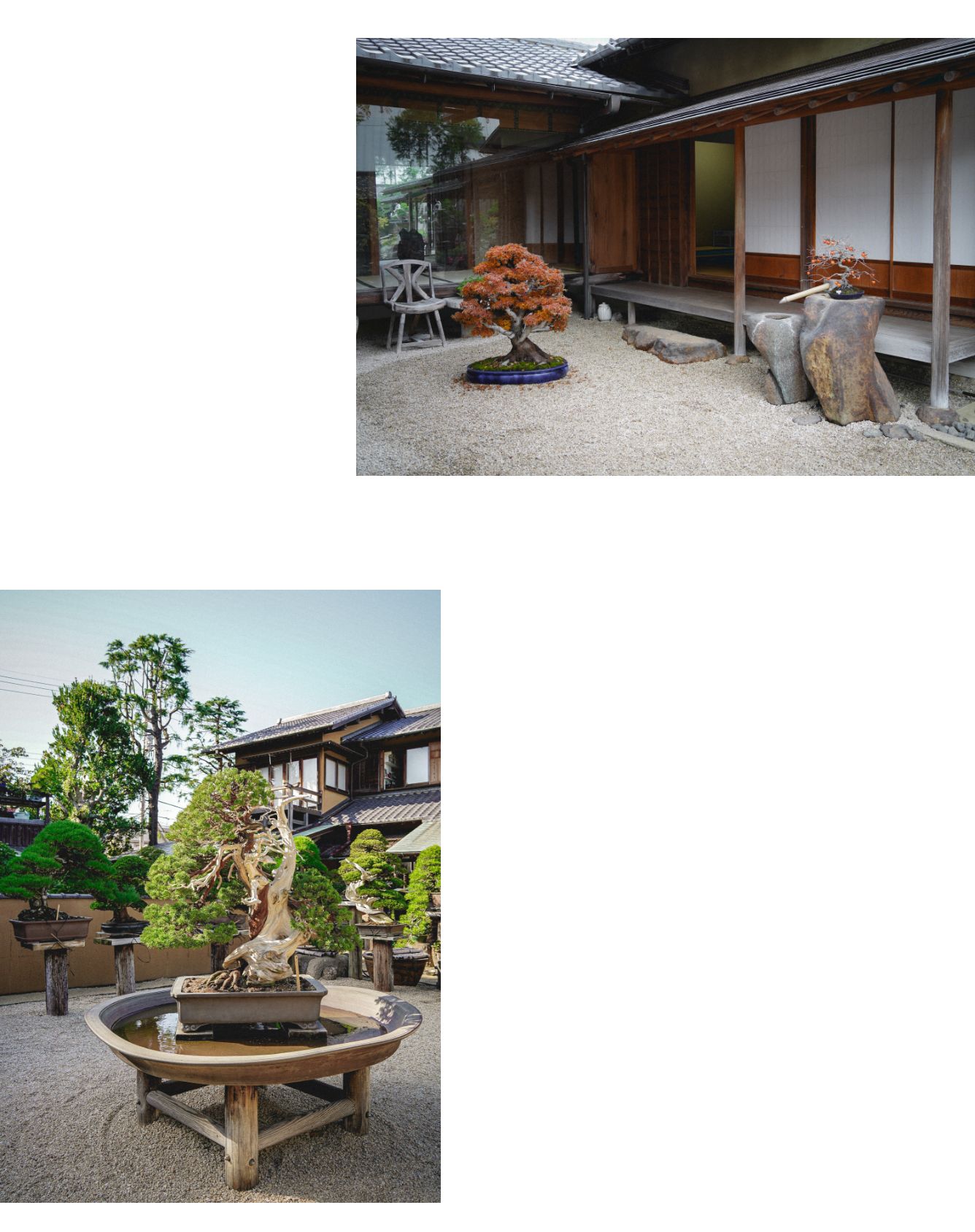
What should one keep in mind if they want to start bonsai?
First, you need to understand the tree’s physiology. Can this species withstand cold or is it heat-sensitive? You also need to understand the appropriate time of care for each tree variety. With the right water, sunlight, temperature, and care from the heart, even a tree bought for 100 yen can thrive to become of value.
Plants are living beings. Just as humans get haircuts, bonsai needs pruning. Just as we exercise to stay fit, bonsai needs shaping with wire. The required care is different throughout the year, and that’s part of the fun. There are many learning resources available now. I myself teach every Sunday and would love to see young people give it a try.
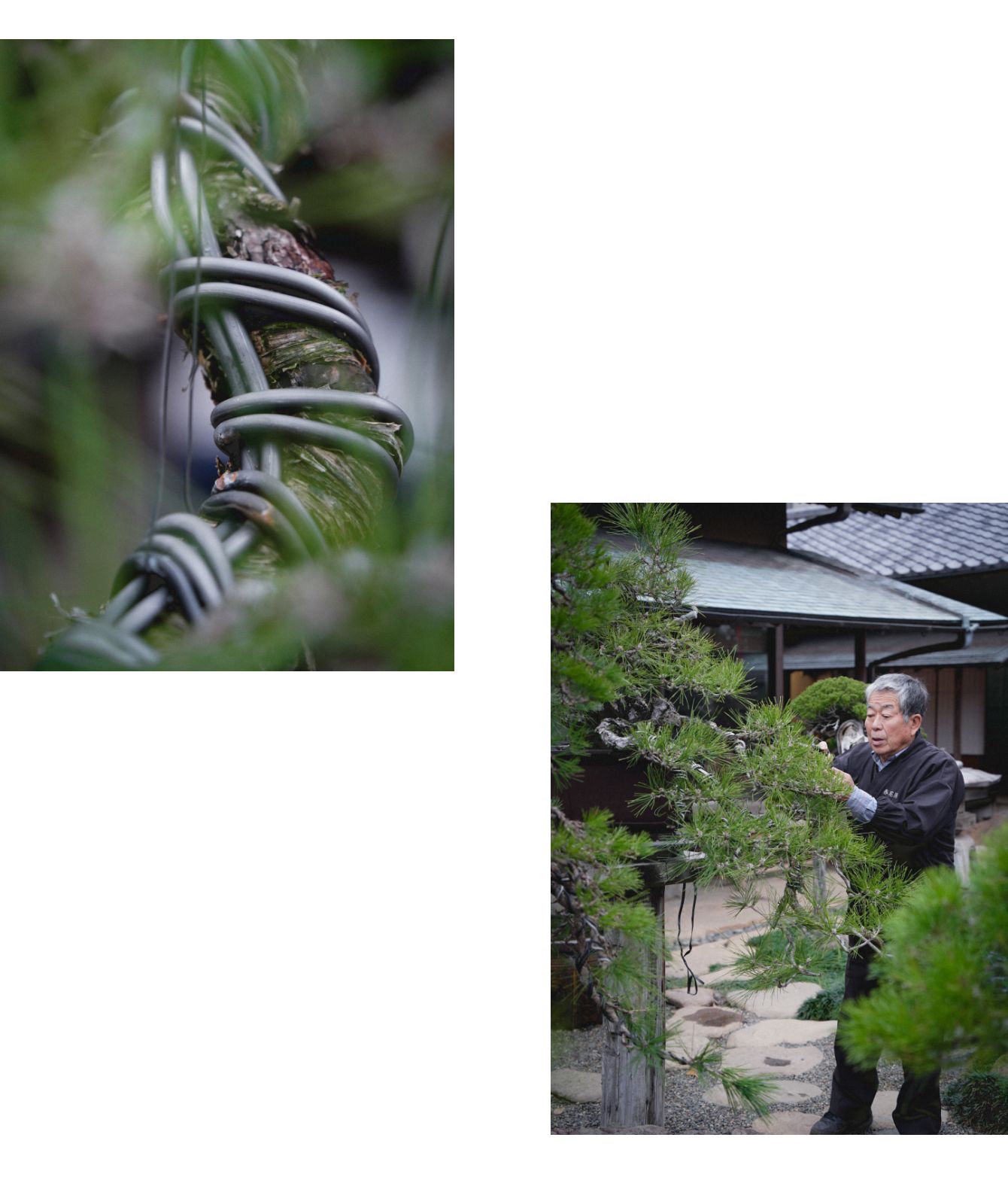
How do you hope to pass on the culture of bonsai to the next generation?
Through bonsai, I want to convey how culture enriches the heart. Appreciating beauty may be one of the traits which makes us human. Dogs and cats don't find satisfaction in looking at paintings. Art doesn’t feed us, but we can feel with our hearts.
Culture is “onkochishin.” It’s about finding the new in the past. As we learn from old traditions and practices, we must find new ways to preserve culture in a way that fits our time. For instance, many homes today don’t have a traditional tokonoma (alcove), so insisting on bonsai to be displayed there has its limits.
It’s essential to share culture in ways that suit our time. Money is important, but to be attached to one thing can blind us to what truly matters. Nothing would make me happier if bonsai, a cultural treasure of Japan, can inspire the next generation to live an enriching life.
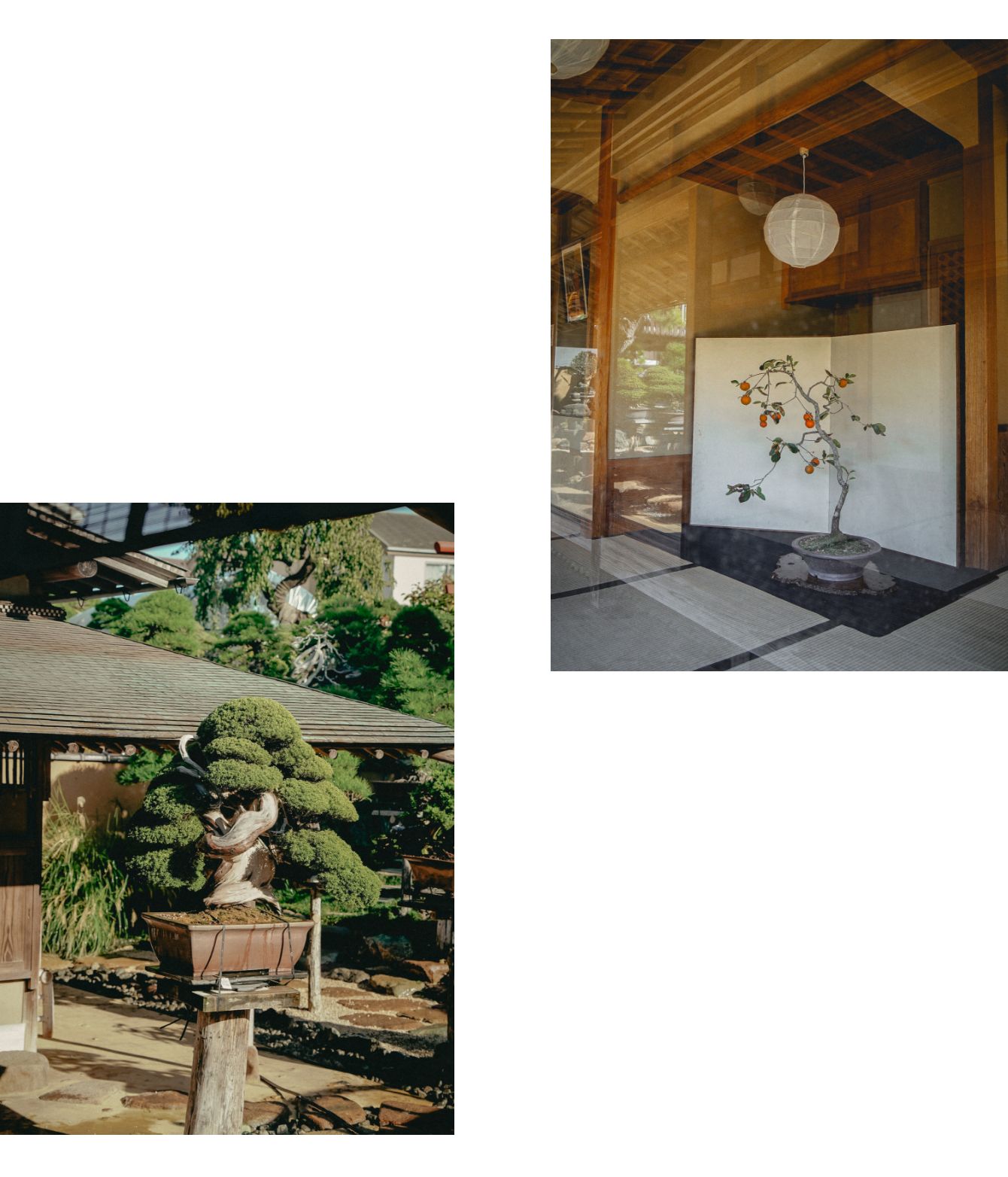
SHUNKAEN BONSAI MUSEUM
Address: 1-29-16 Nihori, Edogawa-ku, Tokyo
Open: 10:00-17:00
※Closed on Mondays
Entrance fee: ¥1,000
WEB: https://kunio-kobayashi.com
Photographer & Design: Mammy Horie
Text: Yuko Homma
Translation: Lei Takase




